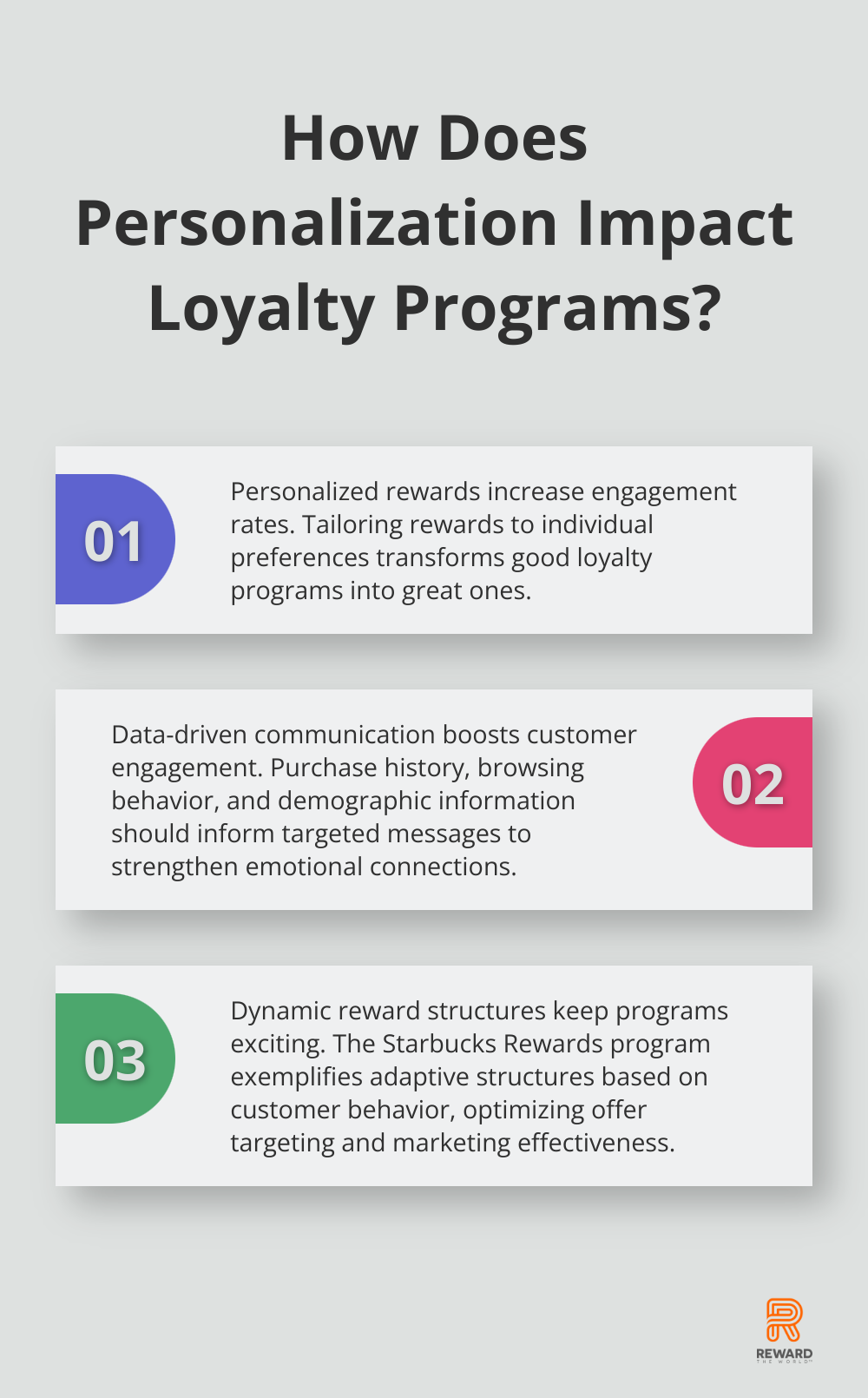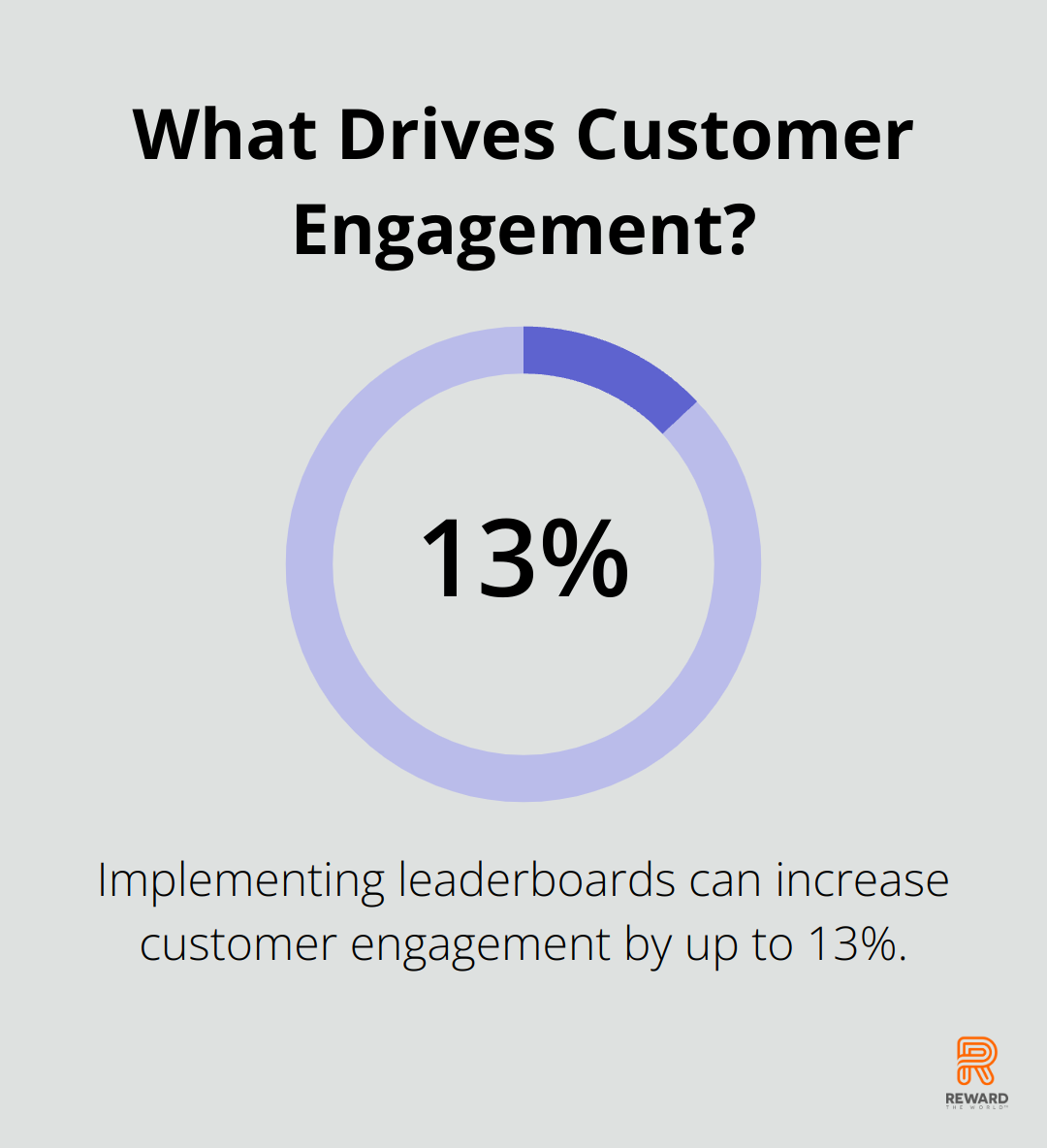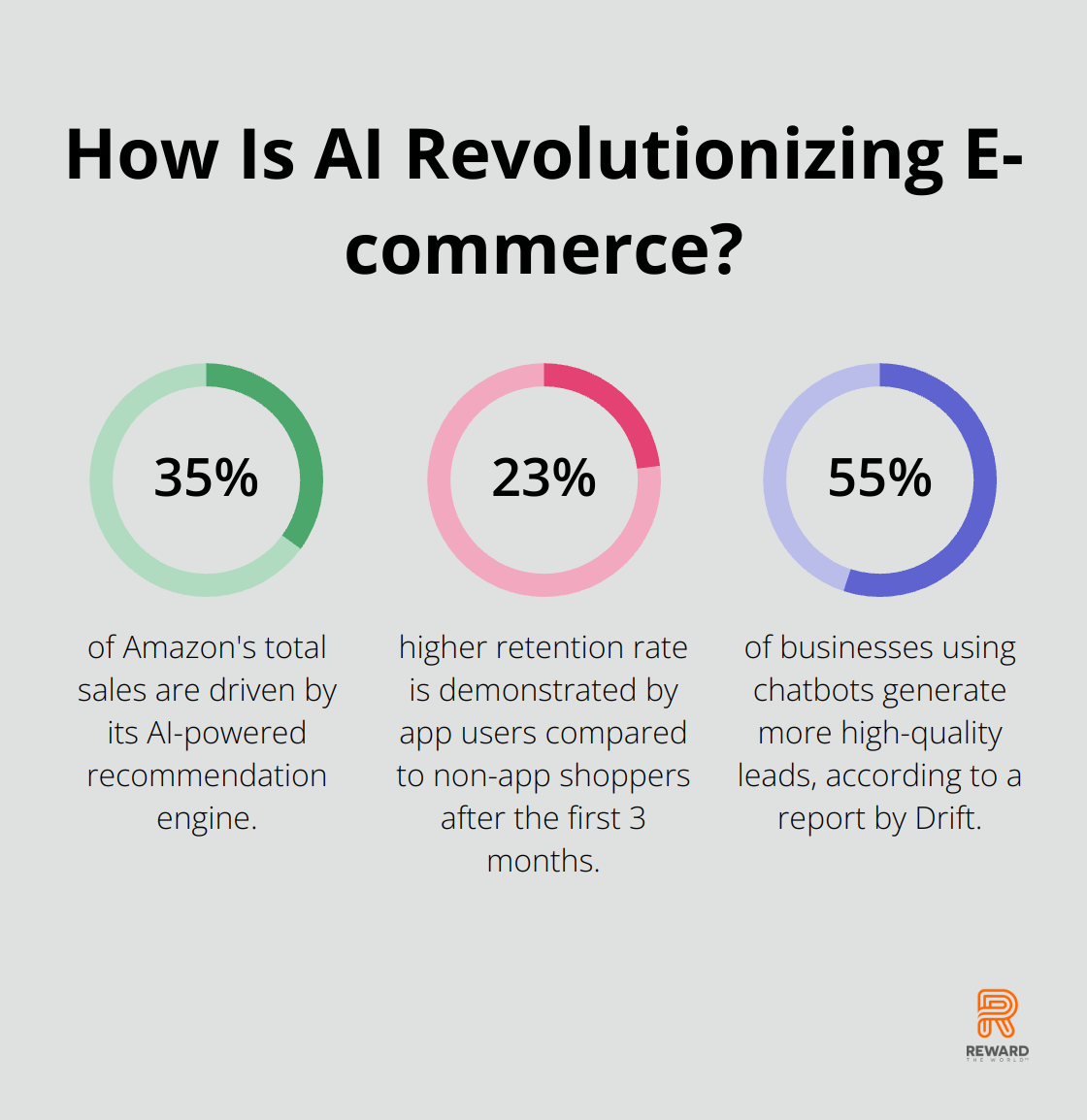
Loyalty programs are powerful tools for businesses, but keeping customers engaged can be challenging. At Reward the World, we’ve seen how subtle strategies can make a big difference in program success.
By applying behavioral economics nudges, companies can significantly boost engagement without overhauling their entire loyalty structure. This blog post explores three key areas where small changes can yield impressive results.
How Personalization Boosts Loyalty
Personalization transforms good loyalty programs into great ones. At Reward the World, we’ve observed how tailoring rewards and communications to individual preferences significantly increases engagement rates.
The Power of Tailored Rewards
One-size-fits-all approaches fall short in loyalty rewards. Recent research delves into the dynamic landscape of personalized marketing and its profound impact on consumer engagement and purchase behavior in the digital age. This fact underscores the need to abandon generic rewards and embrace a targeted approach.

A coffee shop chain could offer a free pastry to a customer who often buys breakfast items, while providing a discount on beans to a home-brewing enthusiast. This level of personalization demonstrates to customers that you understand and value their unique preferences.
Data-Driven Personalized Communication
Data forms the foundation of effective personalization. Recent findings show how AI and personalization are transforming consumer experiences, boosting engagement, satisfaction, and loyalty in the digital age.
Purchase history, browsing behavior, and demographic information should inform targeted messages. A sports retailer might send workout tips to fitness enthusiasts or game schedules to fans of specific teams (based on their purchase history). This approach not only increases engagement but also strengthens emotional connections with your brand.
Dynamic Reward Structures
Static reward programs quickly lose their appeal. Implementing adaptive structures based on customer behavior keeps things fresh and exciting. The Starbucks Rewards program exemplifies this approach, with analysis aimed at optimizing offer targeting and improving the overall effectiveness of marketing strategies.
Time-sensitive offers or surprise rewards create a sense of urgency and delight. A hotel chain might surprise a loyal customer with a room upgrade on their birthday, creating a memorable experience that reinforces brand loyalty.
Seamless Integration Across Touchpoints
Personalization extends beyond offering relevant rewards-it creates a tailored experience at every interaction. Reward the World’s platform (available in 15 languages with a 250 million-user base) enables businesses to seamlessly integrate personalized rewards across various touchpoints.
From targeted email campaigns to personalized app notifications, consistency in personalization across all channels strengthens the overall customer experience. This comprehensive approach turns casual customers into brand advocates.
As we move forward, let’s explore how gamification adds an extra layer of engagement to loyalty programs, making the experience not just personalized, but also fun and interactive.
How Gamification Boosts Loyalty
Gamification transforms loyalty programs from mundane point-collecting exercises into engaging, fun experiences. This approach significantly boosts user engagement and program participation.
The Power of Challenges and Missions
Challenges and missions in loyalty programs tap into our innate desire for achievement. Examining 7-Eleven and Narvesen data proves that gamified loyalty drives program engagement and growth and increases revenue. A retail chain might challenge customers to make purchases from five different departments within a month, rewarding them with bonus points or exclusive discounts upon completion.
Starbucks leverages gamification to enhance customer engagement and motivation through its rewards program. Seasonal challenges and limited-time offers create a buzz around the brand and drive sales.
Progress Bars and Achievement Levels
Visual representations of progress tap into our completion bias, motivating us to fill that bar or reach the next level. LinkedIn’s profile completion bar encourages users to add more information to their profiles.

In loyalty programs, progress bars show how close customers are to their next reward or status level. An airline might display a progress bar indicating how many more miles a customer needs to reach elite status. This visual cue can motivate additional purchases or engagement.
Competitive Spirit with Leaderboards
Leaderboards introduce a competitive element that can significantly boost engagement. A study by Gigya revealed that implementing leaderboards can increase customer engagement by up to 13%.
It’s crucial to design leaderboards that motivate rather than discourage participation. Instead of a global leaderboard where top spots seem unattainable, consider segmented leaderboards based on similar customer profiles or time-limited competitions.
Nike’s Run Club app effectively uses this strategy, allowing users to compete with friends or join challenges, fostering a sense of community while encouraging continued engagement with the brand.
Customizing Gamification for Your Brand
When implementing gamification, it’s essential to align game mechanics with your brand identity and customer preferences. Try to create gamification features that suit your industry and target demographics (ensuring that your loyalty program remains both engaging and on-brand).
Gamification can transform loyalty programs from transactional systems into engaging experiences that customers actively want to participate in. This increased engagement not only boosts program participation but also strengthens emotional connections with your brand, driving long-term loyalty.
As we move forward, we’ll explore how leveraging technology can create seamless experiences that further enhance loyalty program engagement.
How Technology Enhances Loyalty Programs
Technology plays a pivotal role in creating seamless loyalty experiences in today’s digital landscape. The right tools can significantly boost engagement and make loyalty programs more accessible and appealing to customers.
Mobile Apps: The Gateway to Loyalty
Mobile apps have become the cornerstone of modern loyalty programs. Research shows that app users demonstrate a 23% higher retention rate than non-app shoppers after the first 3 months. This statistic underscores the importance of a user-friendly, feature-rich mobile app for any loyalty program.

A well-designed mobile app allows customers to check their points balance, redeem rewards, and participate in program activities on the go. Starbucks’ mobile app (which integrates its loyalty program) accounts for over 25% of all in-store purchases in the US, demonstrating the power of combining convenience with loyalty features.
When developing a mobile app for your loyalty program, prioritize speed, ease of use, and functionality. Include features such as digital loyalty cards, real-time notifications for new offers, and progress tracking towards rewards. These elements keep users engaged and encourage frequent interaction with your brand.
AI-Powered Personalization
Artificial Intelligence (AI) revolutionizes loyalty programs by enabling hyper-personalized experiences. AI algorithms analyze vast amounts of customer data to predict preferences and behaviors, allowing for tailored recommendations and offers.
Amazon’s recommendation engine (powered by AI) drives 35% of its total sales. While not strictly a loyalty program feature, it showcases AI’s power in personalizing customer experiences and driving sales.
In loyalty programs, AI can:
- Predict when a customer might churn and trigger retention offers
- Suggest relevant rewards based on past behavior and preferences
- Optimize the timing and content of communications for maximum impact
Implementing AI in your loyalty program doesn’t require complexity. Start with simple machine learning models to segment your customers and personalize communications. As you gather more data and refine your approach, you can introduce more sophisticated AI-driven features.
Chatbots for Instant Support
Chatbots provide instant, 24/7 support for loyalty program members. A report by Drift indicates that 55% of businesses using chatbots generate more high-quality leads. In loyalty programs, chatbots handle various tasks:
- Answering FAQs about point balances, reward options, and program rules
- Guiding users through the redemption process
- Providing personalized recommendations for earning and using points
Sephora’s chatbot helps Beauty Insider members book makeover appointments and provides personalized product recommendations, enhancing the overall loyalty experience.
When implementing a chatbot for your loyalty program, start with the most common queries and gradually expand its capabilities. Always include an option for users to connect with a human agent for complex issues.
Blockchain for Enhanced Security and Transparency
Blockchain technology offers new possibilities for loyalty programs. The transparency afforded by blockchain allows for clear tracking of loyalty points and rewards, building trust among customers.
Blockchain can:
- Prevent fraud by creating an immutable record of transactions
- Enable seamless transfer of points between different loyalty programs
- Create smart contracts for automatic reward distribution
While still in its early stages for loyalty applications, blockchain holds promise for creating more robust and flexible loyalty ecosystems in the future.
Final Thoughts
This exploration of subtle ways to boost loyalty program engagement reveals powerful strategies that transform customer relationships. Personalization, gamification, and technology integration create loyalty programs that resonate with modern consumers. These tools tailor rewards, implement dynamic structures, and tap into our desires for achievement and competition.

Technology enhances loyalty programs through mobile apps, AI-powered systems, and chatbots. These advancements create seamless experiences that keep customers engaged. Continuous innovation and adaptation are essential as consumer preferences evolve and new technologies emerge.
Reward the World offers a comprehensive solution for businesses looking to elevate their loyalty initiatives. Behavioral economics nudges within these strategies can further enhance engagement by influencing customer decision-making. Embracing these powerful engagement tactics will create loyalty programs that turn customers into passionate brand advocates.
